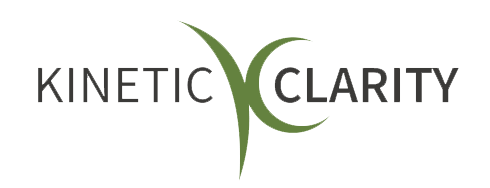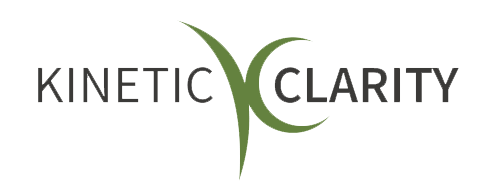How Do You Measure Well-being at Work (Yours and Your Employees)?
Creating a More Positive, Productive Work Environment

By prioritizing employee wellbeing, companies can create a more positive and productive work environment. While measuring wellbeing can be subjective, there are several ways to gauge whether your workplace initiatives are having a positive impact. Here are some key indicators to consider.
New Why You Should Measure Workplace Wellbeing
Measuring employee wellbeing is an essential aspect of organizational success. Workplace well-being not only impacts the health and well-being of workers but also affects productivity and organizational performance.
The connection between company performance and employee wellbeing is clear and cannot be ignored. By measuring employee wellbeing, organizations can better understand the factors that contribute to employee satisfaction and happiness, which can guide the development of programs and initiatives to improve company culture and morale.
Quality wellbeing programs improve employee satisfaction and attract talent, as employees are more likely to be engaged and stay with the company. However, presenteeism is an issue, where staff shows up to work but don’t fully engage either because they’re sick or have low engagement. This can lead to significant lost productivity, with estimates suggesting over three months of lost productivity.
By investing in workplace well-being, as well as local organizations and community development, organizations can support a happier, healthier, and more productive workforce. This, in turn, can contribute to the success and economic well-being of the organization.
Taking the Workplace Temperature
You don't need a specialized assessment to get in touch with the current state of employee wellbeing. Instead, you can look at engagement surveys, turnover data, and annual review data to get an idea of how you’re organization is faring. Even monitoring productivity levels, including engagement and output, is a relatively solid indicator of how your employees feel.
Determine your goals before measuring employee wellbeing: what is your overall objective with employee wellness? This can direct what areas you look for in your metrics.
Employee Engagement
When employees are engaged, they bring their best selves to work, are more productive, and are less likely to leave the company. On the other hand, when employees disengage, they are less likely to be effective and more likely to experience burnout or other negative impacts on their well-being.
And employee burnout is a significant drag on any organization. This type of engagement fatigue makes employees 63% more likely to miss days of work and twice as likely to seek employment elsewhere.
Measuring employee engagement, therefore, provides valuable insight into the overall well-being of the workforce. By tracking engagement levels, organizations can identify areas where they need to improve the work environment, support systems, and employee experiences. This, in turn, can lead to the development of initiatives that promote employee wellbeing and engagement, resulting in a happier, healthier, and more productive workforce.
Productivity Levels
Productivity levels are another indicator of employee wellbeing. A healthy and engaged workforce is more likely to be productive and deliver high-quality work.
The entire company suffers when productivity levels drop. It means that less work is getting done, so business slows down. When a business moves along too slowly, it can fall behind its competitors, disappoint customers, and won’t keep up with business trends.
Productivity is beneficial for both the organization and the employees as it leads to a sense of accomplishment and contributes to their overall satisfaction with their job and the company.
Absenteeism/Churn
High levels of employee turnover and absenteeism can indicate a hostile work environment, low employee morale, or other issues that impact employee wellbeing. When employees are consistently absent or quit in high numbers, it can negatively impact the organization's productivity and overall performance.
It’s impossible to keep the average pace of business when employees consistently miss work. The projects they are working on get put on hold and can’t be completed without them. However, wellness programs can reduce absenteeism by up to 19%.
It’s just as bad if your company experiences high employee turnover. Hiring new employees requires a great deal of time and costs the company money. It also slows down the pace of work as new workers get settled.
Safety Incidents
Safety incidents are a valuable indicator of employee well-being because they reflect an organization's overall health and safety culture. By tracking the frequency and severity of safety incidents, companies can gauge the level of risk and danger their employees are exposed to daily.
A company can use this information to identify areas where improvements can be made to promote a safer working environment and to ensure that employees are not subjected to unnecessary harm or injury. Monitoring safety incidents can also provide valuable insights into employee morale, job satisfaction, and overall well-being; a positive safety culture can lead to increased employee engagement and a sense of security.
Customer Satisfaction Survey
Customer satisfaction surveys provide a direct link between employee behavior and customer satisfaction. The way employees interact with customers and handle customer complaints and concerns has a tremendous impact on the overall customer experience.
So, satisfaction surveys give organizations valuable insights into how employees perform and contribute to the overall customer experience. For example, high customer satisfaction scores suggest engaged and motivated employees who take pride in their work and care about providing a positive experience for customers. On the other hand, low customer satisfaction scores may indicate issues with employee training, burnout, or low morale.
By regularly conducting customer satisfaction surveys, organizations can get a pulse on employee well-being and make necessary adjustments to support their employees and improve customer satisfaction.
Wrapping Up
It can take some time, but collecting data in these areas over multiple years helps evaluate trends and the direction of employee wellbeing. If you’re unhappy with the numbers, you can focus on the essentials outlined in the US Surgeon General’s report on mental health and wellbeing.
- Protection from Harm
- Connection and Community
- Work-life Harmony
- Mattering at Work
- Opportunity for Growth
Kinetic Clarity can help you and your leaders embrace and improve employee wellbeing by learning to have open, transparent, and sometimes challenging conversations about what and how the work gets done. We focus on building trust and coaching and developing employees to give everyone an opportunity for growth. Contact us to get started.












